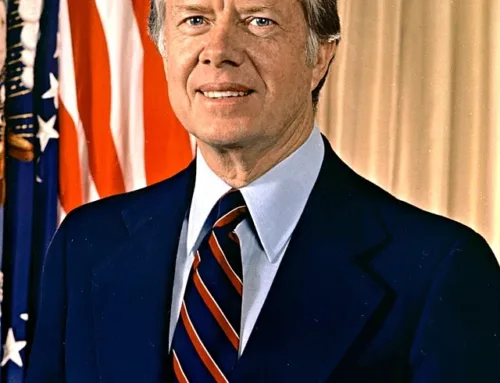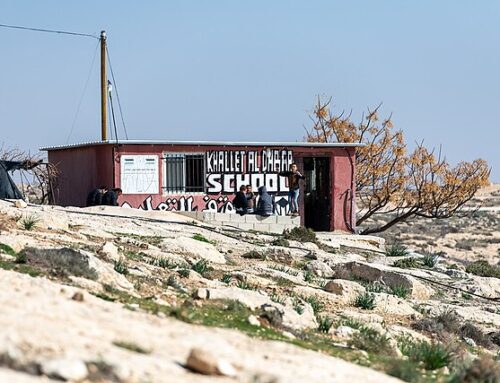By Jerome A. Chanes
My t’fillin-zekl—the small velvet sack in which I store my t’fillin—tells me a story early every morning, when I remove my t’fillin from the sack in preparation for davenen, morning prayers.
The t’fillin-zekl in question is old, a hundred years and more, and is a lovely thing, deep maroon velvet, with an old-fashioned pull-string. How came I by this century-old artifact, and what is its story?
The zekl in fact belonged to my dad, Manuel Simcha Chanes, received in turn from his father—my grandfather Rav Yaakov Chanes—for his bar-mitzvah in Czernowitz in 1919. My father gave me the zekl with my first set of t’fillin for my bar-mitzvah in 1956.
Thus far, a piece of a family chronicle, of marginal interest to no one, nothing dramatic.
But my dad’s life took a sharp turn when he was a teen-ager.
The Chanes family was Zionist—by no means a “given” in Eastern Europe in the early decades of the twentieth century—and were sympathetic to the Religious Zionism movement, the political face of which was the centrist Mizrachi, then a new political group. But my dad was taken with Hashomer Hatzair—far-left collectivist-socialist, aggressively Zionist, vigorously anti-religious. Hashomer Hatzair were strong in Czernowitz, and as a teen-ager my father joined the movement.
My dad took his Hashomer Hatzair training seriously—he went on hachshara, training at an agricultural-training camp near Czernowitz. He added Hebrew to his collection of languages. He learned something about collectivist socialism. And he parted company, reluctantly, with his traditionally-observant family.
In 1924, aged eighteen, Manuel Simcha was sent by Hashomer Hatzair to the Yishuv—the Jewish community in British Mandatory Palestine. A visa was somehow secured, and my dad arrived at Kibbutz Beit Alpha—the first Hashomer Hatzair kibbutz, founded just two years earlier. Conditions were bleak on Beit Alpha, situated as it was in the Beit She’an Valley, under Mt Gilboa—harsh winter weather conditions, occasional attacks from Arab villagers. But the young chalutzim (inadequately translated as “pioneers,” better as “those who take out of the soil”) were a hardy lot. On the kibbutz, my dad thrived, even with the malaria (pervasive), and back-breaking work (pervasive), and service in the early incarnation of the Haganah. Ideologically, it was a mixed group at Beit Alpha; it was not for another decade that Kibbutz Beit Alpha became purely Hashomer Hatzair socialist. And this suited people like my dad, who didn’t know Ber Borochov from Bar-Kochva.
And the t’fillin zekl with my father’s t’fillin? Although my dad was no longer religiously observant and never donned his t’fillin, he always had his t’fillin with him in Beit Alpha. The little maroon velvet sack—buffeted here and there in the multitude of tribulations on the kibbutz—somehow survived; indeed, the zekl was (as Simcha told me many years later), “My one kesher (link) to my family and to community and to tradition.”
Five years into his kibbutz sojourn, Manuel Simcha had an encounter with Rabbi Abraham Isaac Kook, the charismatic thinker and writer and the first Ashkenazi Chief Rabbi of the Yishuv, who was visiting non-religious settlements around Palestine. His brief encounter with Rav Kook occasioned my dad’s “conversion” back to traditionally-observant Judaism. He left Beit Alpha, most reluctantly, and moved to Jerusalem. My father became very frum (Agudat-Yisrael religious), but remained ideologically and politically Hashomer Hatzair. In the 1930s Manuel Simcha found himself in Germany, where he was—together with many others—engaged in hatzala (rescue work). He and my mother Berta—also from Czernowitz and also a “progressive,” and to whom Manuel Simcha was distantly related—immigrated to the United States in the late 1930s.
And he yet carried the maroon velvet t’fillin-zekl.
What became of my father? We lived in Washington Heights, where my dad was a shop-keeper. In the McCarthy-besotted 1950s, he and my mom kept way under the radar. They were involved in their Orthodox synagogue, their public Zionism was more Mizrachi than Marxist Mapam. My dad’s only nod to radical socialism was to buy the Communist Freiheit every day—but he carried it from the newsstand with the centrist DerTog and the Orthodox Morgen Journal. My kid sister and I, in our grade-school yeshiva, were most careful to stay under the political radar as well. (When we refused, however, to recite the then-newly-mandated “Under God” in the “Pledge” and to participate in air-raid drills—“It’s a political act!”—we got into minor-league trouble.)
And the t’fillin–zekl? My dad’s Czernowitz-Beit Alpha-Jerusalem-Germany-New York t’fillin-zekl, meager artifact that it was, “Reminds me, every day, of what my life was all about.”
And the t’fillin-zekl yet does this for me.
_________
This first appeared in New York Jewish Week, 8th January, 2015




A fascinating journey Jerome, it provides insight into the various journeys and paths that our Jewish people have taken in the last generation. I hope this is is read by many who look at this blog.
This is a moving and fascinating story, one more example of the many interesting people who made their way to Washington Heights.
I’m gretufal you made the post. It’s cleared the air for me.